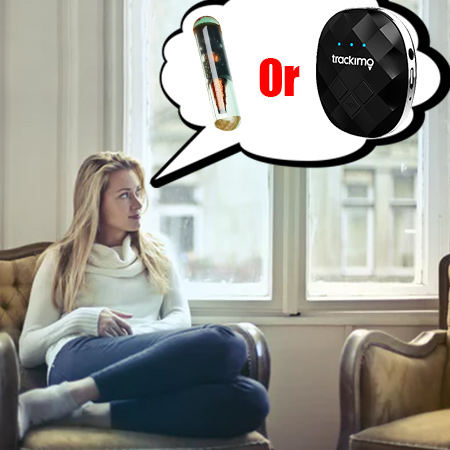
Which tracking technology suits your pet better? GPS versus Microchip Technology?
Did you know that more than 10 million pets are lost or stolen every year? Only 90% of them end up in the shelter as some continue to roam the streets, homeless, while others end up euthanized because the owners either have no way of finding them or, sadly, didn’t make the effort of looking for them.
Living in the 21st century, almost everybody is using location tracking apps and identification systems. Thus, pet owners have no excuse to be irresponsible and unprepared when their pet goes missing. The numbers skyrocket during the summer months when traveling and spending time outdoors are frequent activities.
Most of us are now familiar with the uses of GPS navigation, and we have it built on our smartphones. The same method is now applicable to tracking pets and accounts for over 38% of the return-to-owner rate of lost or stolen dogs. On the other hand, pet microchips are also now so crucial that over 75 countries around the world have made it mandatory. GPS versus microchip: these two tracking technologies promise to reunite pets with their owners, possibly lessening the missing posters on poles and walls in the community in the future.
Scroll down for videos

topvet.net
GPS Tracking versus Microchip Technology: Which One Suits Your Pet?
You are now probably asking which technology is better for tracking your pet. GPS versus microchip technology? Note that each works differently and has its own sets of pros and cons. What if your little furry friend can’t be found down the street, or worse, what if he’s been stolen? In this article, we’ll walk you through the differences to help you out.
Microchip Technology
Dog tracking chips are tiny circuits embedded under the skin of the animal. It uses radio frequency identification (RFID) technology, unlike GPS trackers. Pet microchips contain all information about the animal, including the unique ID of the chip; your dog’s breed, description, and vaccination schedule; the owner’s information; and the vet’s contact details.

gaurani.almightywind.info
Many pet owners are reluctant to have their best friend implanted with a microchip. Some believe that the procedure is unsafe, while others are concerned about the potential side effects that it may bring to their four-legged friend. Microchips only look scary probably because of the word implantation, but actually, the procedure is almost just like getting your dog a simple vaccine injection, except that the needle used is a little bigger (the microchip ID implant is the size of a grain of rice and needs a special syringe).
Like any other medical procedure, there is a possible health risk such as hemorrhage, chip migration, and infection. But the side effects mentioned are considerably rare. This can be avoided if microchip implantation is done by a licensed vet.
Pros
- Permanent and affordable. Implanting the microchip is a quick, easy, and relatively inexpensive one-time procedure. The device is a small, electronic chip enclosed in a glass cylinder about the size of a grain of rice and is inserted under your pet’s skin. It will never fall off or come out unless surgically removed.
- Resistant to the elements. You never have to worry about your pet’s microchip malfunctioning if they get soaked in the rain, if they take a swim, or if they roll around in the mud. Since it is inserted under the skin, it’s naturally protected from the elements.
- No batteries required. Because a radio-frequency identification (RFID) implant doesn’t require a power source, you don’t have to worry about keeping it charged every day for it to work. It will last the lifetime of your pet!
Cons
- Only read by a special scanner. This means that a lost dog implanted with a microchip can only be reunited with its owner if brought to a shelter or to the proper authorities with the specific scanner. You have no means of knowing where your pet is. You will have to wait for a good Samaritan to call and inform you of its location. Microchip technology is therefore futile if your pet ended up in the hands of a thief.
- Useless if not registered. You must register your pet’s microchip to connect its ID number to your information. Too often, lost animals are taken to shelters and scanned for microchips, but the ID number leads nowhere because the microchip was never registered.
- Non-uniform devices. There are various types of chips and readers out there. Worse, veterinarians and some shelters often have only one type. Your pet’s microchip may not be compatible with the scanner in the shelter your pet was taken to.
Before you proceed . . .
So in the fight between GPS versus microchip, you’ve chosen the microchip. If you decide to get this procedure for your pet, here is what you need to do for the safety of your pet:
- Make sure that your vet is qualified and licensed. Complications develop if the procedure is not done properly.
- Microchip implants use radio frequency. Find out what frequency the nearest animal shelter is using. Better yet, look for a universal microchip so if the time comes for your dog to be scanned, the scanner should be able to read the information inside the chip.
- If you’re planning to travel internationally with your pet, check the microchip system that your destination country is using. Find out if it’s compatible with what your dog has. In European countries, they usually use various microchip frequencies and implant them in different parts of the dog’s body.

LocalSaver
GPS Tracking Technology
GPS trackers, on the other hand, are larger devices, almost the same size as a matchbox. It uses the global positioning system (GPS) to transmit location information, just like how your car’s or your phone’s GPS works. The tracker gives out the dog’s exact location through SMS or email alerts.
trackimo.com
Pros
- Exact location in real time. If you’re in an area with GPS signals and/or cellular coverage, the tracker should be able to relay your pet’s precise location. Whether or not this happens in real time depends on how spotty internet coverage is. Unlike Bluetooth-only trackers that have a range of 50 feet, a GPS tracker lets you track your pet’s movements anywhere in the country or in the world, with continuous location updates on a map.
- More than just your pet’s location. Several GPS pet trackers can monitor your pet’s fitness and even some health factors. Some trackers analyze your dog’s vitals and activity signs, for example, from resting to running, plus pulse and respiration data. Other trackers can even monitor the quality of sleep, distance traveled, calories burned, and more.
- Geofence features. You can prevent losing your dog using the GPS tracker through geofences. This function allows pet owners to set virtual fences on the map, and they will be alerted once their dog enters or exits the specified area.
Cons
- May fall off. The GPS tracker is either affixed to your dog’s existing collar or is the collar itself. If not fastened securely around the dog’s neck, the device may fall off. If the dog is stolen, it can also be removed by the thief.
- Battery powered. If the device runs out of battery, you won’t be able to track your dog anymore. GPS trackers need to be charged often, and battery life varies from brand to brand.
- Expensive. Most pet GPS trackers require a service plan that incurs monthly or annual fees. Only one tracker so far includes a year’s worth of free service and an affordable service plan after that.
Before you proceed . . .
So in the fight between GPS versus microchip, you’ve chosen the GPS tracking device. Before buying a GPS tracker for your pet, consider the following first:
- The GPS tracker should have the proper size and weight, especially if you own a cat or a smaller dog. The device should not be too bulky to limit your dog’s movement. It should also be sturdy and impact-resistant.
- Your GPS tracker’s battery must last long enough. Note that the device’s ability to determine your dog’s exact location depends on its battery life. But sometimes, battery life also depends on how the owner uses the device. Frequent checking of location can drain the battery faster. Adjust your settings so the device only sends you updates every 15 minutes or so, not every 5 minutes.
- The device won’t work properly if you’re in a place with an obstructed view of the sky since most of the devices rely on cellular coverage. Though there are GPS tracking devices that do not depend on network coverage, they tend to be more expensive. However, they do transmit location information better.
trackimo.com
Consensus
Which one won? GPS versus Microchip technology? Actually, it’s a draw.
GPS trackers, so far, are undoubtedly designed for dogs. On the other hand, your cat will not appreciate having to drag around a collar, so microchip your cat and skip the GPS tracker.
Hopefully, we have made it clear that microchip implants are designed for identification while GPS tracking devices are designed for pet monitoring. In the event that the tracking technology you chose fails, it will dawn on you that you should have equipped your best friend with both. GPS pet trackers work immediately but are worn externally and can fall off or get damaged. The microchip implant acts better as a backup. But ultimately, in the fight between GPS versus microchip, both options are valid and good.
Haven’t Lost a Pet Yet?
Don’t wait till you experience the heartbreak. You should have learned something from that GPS versus microchip stand-off earlier. We strongly recommend you secure your best friends with GPS trackers before it’s too late. Trackimo’s mini GPS tracker is a tiny tracking device that allows you to see your pet’s whereabouts in real time. You won’t have to worry where your pets have gone anymore. We included a collar attachment for tracking your dog, horse, cattle, or almost anything you want to track and locate. If you want a pet pouch attachment instead, our 3G Guardian GPS tracking device will give you what you need.
Hope we helped!
Watch the videos below